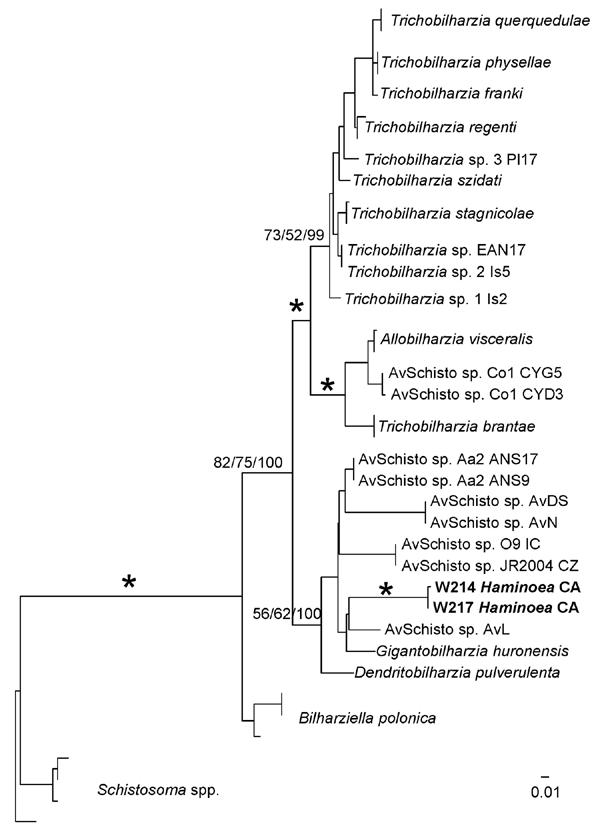Volume 16, Number 9—September 2010
Research
Cercarial Dermatitis Transmitted by Exotic Marine Snail
Figure 5

Figure 5. Maximum-likelihood phylogenetic tree based on internal transcribed spacer region 2 sequences of relationships among members of the Bilharziella, Trichobilharzia, Gigantobilharzia, and Dendritobilharzia species clade from this study and unidentified samples of avian schistosomes from GenBank (online Appendix Table, www.cdc.gov/EID/content/16/9/1357-appT.htm). Samples in boldface are those obtained from Haminoea japonica snails. Node support is indicated by maximum parsimony (MP) and minimum evolution (ME) bootstrap values and Bayesian posterior probabilities (PPs), respectively. Asterisks indicate MP and ME bootstrap values >85 and PPs >98. Branch support is designated only for major clades. Scale bar indicates nucleotide substitutions per site.